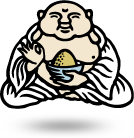The Art of Stinky Seafood
Posted by Pailin Chongchitnant on Thursday, May 23rd, 2013Today I made a dish called “Tum Bhu Pla Ra.” After I finished, I realized that in one dish I put in not 1, not 2, but 3 different ingredients that by Western standard would be considered “stinky”: Fish sauce, fermented fish paste, and pickled crab. Most people are familiar with “Som Tum” or Thai green papaya salad. Well, Tum Bhu Pla Ra is more of a Lao-style green papaya salad that’s also very popular amongst Thai people. Sometimes Laotians even add a fourth “stinky” ingredient into their papaya salad: Shrimp paste.
Here is a quick run down of the four stinky seafood, all of which are used in multiple countries in Southeast Asia:
Fish sauce: Probably the most famous one of all. Small, salt water fish are mixed with salt and then left to ferment in a vat. The bacteria in the fish’s digestive tract are responsible for the fermentation action. Other pathogenic bacteria are naturally eliminated because of the high salt concentration.
Fermented fish paste (“pla ra” in Thai or “pla dak” in Lao): Similar idea as fish sauce, but rice bran is added to the fish and salt for flavour, colour and body. The difference is that the fish isn’t strained out as in fish sauce, so the end product is thicker and has a muddy colour. While fish sauce is usually bought from the store, many people make their own pla ra at home, although if the container isn’t properly stored during fermentation, you can end up with maggots! Home made pla ra is notorious for being a cause of foodborne illness, so people now boil it before using just to be safe.
Pickled crab: the crab is only stinky because it’s pickled in fish sauce. It’s a simple process of taking small crabs that live in rice paddies, and soaking them (raw) in a mixture of fish sauce and sugar. Sometimes other flavoring such as garlic and chilies are added. The crabmeat becomes soft and mushy in the process, so you can just suck the sweet-salty meat right off the shell like a straw!
Shrimp paste. If you’ve had a Thai curry, you’ve had shrimp paste, as it’s an ingredient in every Thai curry paste. It’s commonly used in Indonesian cuisine as well–they call it terasi. It’s a bit of a misnomer because it’s actually made from krills. The krills are mixed with salt, dried in the sun, ground into a paste, and finally stored into jars for fermentation.
Quite an impressive list! This got me wondering why is it that Lao and Northeastern Thai cuisines (which have many similarities) use so much preserved seafood compared to other region. I think the answer could be used to explain all cuisines: climate and resources.
Compared to the rest of Thailand, the Northeast and Laos are poorer, with hotter and drier climate making it a difficult place to grow plentiful food. When people don’t have the resources to buy large protein like chickens or pigs, then small sources of protein such as little fish, shrimp and crab that run around in rice paddies and rivers are valuable. It is very important, therefore, that these precious protein sources don’t go bad, and how can one preserve something for a long time in a hot climate without refrigeration? One ferments and pickles!
But there is another added benefit to making things pungent, and it’s the same reason why Lao and Northeastern Thai food has very strong flavours that are heavy in spice, salt and acid. Strong flavours and pungent smells can cover up the not-so-pleasant flavours of low quality ingredients or ingredients that are on their last legs.
Overtime, flavours that developed out of necessity become the standard and the preferred flavours. Now Northeastern Thai and Laotians can’t live without these “stinky” ingredients that they, and I, actually find “fragrant”.



Posted on May 24th, 2013
Mrglassonion says:
http://t.co/ikt8poRAgQ importante leer para entender el sabor Thai. @ivannazau
Posted on June 21st, 2013
Peter Passchier says:
I thought fish sauce was most often made from anchovy species, which are salt water fish..?
Posted on July 10th, 2013
Brenda says:
Very interesting, I’d never heard of pickled crab before! I’m learning a lot from your posts, thank you so much for posting them. I was wondering if you have a recommended brand of shrimp paste that’s easily found in North America?
Posted on July 11th, 2013
Pailin Chongchitnant says:
Hi Brenda! I usually use Trachang Brand, it’s in a white plastic tub with a yellow/red label with a picture of a balancing scale on it. I don’t know how widely available it is in other cities though…
Posted on July 11th, 2013
Pailin Chongchitnant says:
I think you might be right, Peter! (sorry it took a while…) I just double checked my info. Fixing it now, thanks for pointing it out!